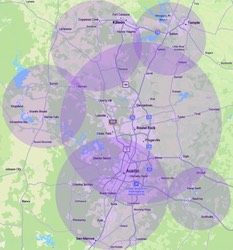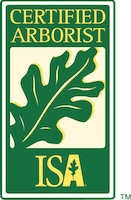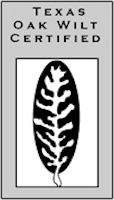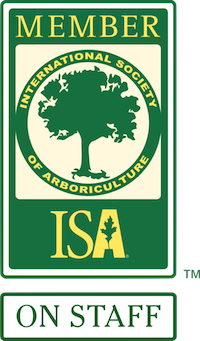These tree care tips from the professional arborists at A Good Morning Tree Service will help your new trees live their best, longest, healthiest lives.
Understand Tree’s Root Systems
The first thing to be mindful of is exactly how a tree grows; specifically, its root system. A tree’s root system actually grows outward from the trunk of a tree and at a minimum of one to two times the tree’s height! A tree’s root system is responsible for the oxygen and water needs of the tree. It’s important to know how far out from a tree’s trunk the root system spreads, as applying herbicides within 40-50 feet of a tree can do irreparable damage to its roots. This is the number one problem facing trees growing in urban environments; even when they’re only applied along sidewalks, driveways, alleys, and so on.
Also note that certain grasses, especially bluegrass, brome, and sod-forming grasses are extremely competitive with tree’s roots systems.
Proper Mulching Is Important to Root Development
Proper mulching is important for developing healthy root systems. The use of organic mulch around the base of a tree, such as wood chips, is very important. But remember to not pile them onto the stem or the trunk as that can create moisture buildup and lead to rot.
Expose your Flare! Trees should not look like telephone poles where the trunk meets the earth. Healthy trees have exposed root flares at the base. Do not pile mulch on top of the root flare.
Holes Lead to Decay
Cavities (holes) in your trees can fill with water and expedite the decaying process. Cavities should be filled with expanding foam before they fill with rain or water from a sprinkler. Learn more about repairing large holes in tree trunks.
Got Bugs?
Diatomaceous earth (a soft, siliceous sedimentary rock that can be crumbled into a fine powder) is a natural, safe, and effective solution to prevent pests from getting into your trees, garden, or home. Diatomaceous earth causes insects to dry out and die by absorbing the oils and fats from insect’s exoskeleton. It remains effective as long as it is kept dry and undisturbed.
Yellowing Leaves?
Don’t throw away your used coffee grounds! Coffee grounds are rich in nitrogen, which allows plants to absorb water and nutrients. Uniform yellowing of older leaves and slow growth are usually the first sign of nitrogen deficiency. Mix the used coffee grounds into the soil around your trees to give them a little extra help.
The Threat of Chlorosis
In soils where there is a decided lack of minerals, trees can develop a condition known as chlorosis. This leads to yellowing leaves, stunted tree growth, branch dieback, and even tree death. The high pH level needs to be balanced out to mitigate the condition. This can be done by introducing sulfur or iron to the soil surrounding your roots.
Water Your Trees Often Enough (But Not Too Much)
One of the biggest contributors to poor tree condition stems from the tree either receiving too much or too little water. Determining a proper watering schedule or set of guidelines proves trouble due to variable soil and weather conditions. But what you are really trying to accomplish is ensure that the root ball is moist but not fully saturated. When first planting a tree, you should pay attention to the soil moisture of the root ball and its surrounding soil, every day, for the first 10 days. If dry within the top one to two inches, you should water it. Gradually, you should reduce your watering to once a week, either increasing or decreasing the frequency based on current rainfall levels.
Need Tree Service Help?
If you are having trouble diagnosing the issues your trees are experiencing, the professional arborists at Good Morning Tree Service are always ready to visit your property, diagnose the problem, and offer you the best solutions. Contact us today for assistance.
Free On-Site Estimates
7am – 7pm
7 days a week




